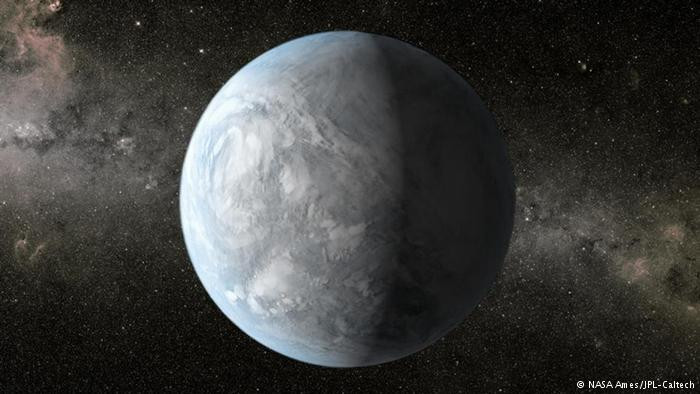The golden rule of finding alien life
A new study from the Virtual Planet Laboratory under the University of Washington (USA) will help scientists better identify planets that are likely to exist.
Extremely powerful space observation and research devices like the giant space telescope James Webb are under construction and expected to be operational by 2018, which will help astronomers find life. in remote areas of the universe by searching for traces of oxygen, one of the most prerequisite substances to create life.
This is done by studying the spectral region or spectral region of visible light due to the atmosphere of a particular planet.
However, some strange complex chemicals and reactions that occur in the universe can make research difficult. There are two most typical cases.One is that the oxygen spectrum is disturbed, making it impossible for scientists to recognize it. Second, other elements that are disturbed should create a spectral region similar to that of oxygen.
The process of finding life outside of Earth is an extremely arduous and persistent activity. Since the universe has billions of celestial bodies, even though the spectral method has been applied to filter for planets with oxygen, the results are still very large.

Kepler 62E planet, located away from the constellation Lyra 1,200 light years.
Moreover, because this method is still quite defective, scientists need a new search method that has more accuracy and results.
On Earth, oxygen is produced almost entirely by photosynthesis. Plants and algae convert sunlight into energy to sustain life, and thus, oxygen on Earth is a sign of the premise and decisive for the existence of life. However, the golden principle of "Having oxygen is life" is not entirely true at the scale of the universe.
Research by scientists from the Virtual Planet Laboratory at the University of Washington has found that some areas of the universe can produce oxygen, but there is no life. This type of oxygen is called "oxygen infertility" , as opposed to "organic oxygen" on Earth.
This phenomenon usually occurs when some planets orbiting a star have a low mass, small, and dim light.
One of the most common methods of generating infertile oxygen in the universe is due to ultraviolet light . Some specific planets have the ability to emit high intensity ultraviolet light and separate CO 2 molecules into O 2 .
However, there is a way to detect this "fake" oxygen. The process of splitting CO2 with ultraviolet light creates an atmosphere that mixes O 2 and CO (carbon monoxide). Therefore, if we discover a terrestrial planet whose atmosphere contains both O 2 , CO 2 and CO, there is a great risk that life does not exist.
The team also found another possible cause of infertility oxygen.In some specific planets, under high pressure and high temperature, the H 2 O water molecule will be broken down, release hydrogen and leave a large amount of oxygen.
In this case, the identification is at the oxygen density. Because of the chemical reaction and not the biological photosynthesis process, the oxygen density in these places will be abnormally high, much larger than the density of oxygen in the Earth's atmosphere.
In such cases, the abundance of infertile oxygen is created, due to its relatively high density, the oxygen molecule often collides with each other and forms O 4 molecular clusters that exist for a relatively short time. This is the key point for scientists to identify and eliminate the infertile oxygen planets.
Some properties of O 4 can be easily detected when analyzing the spectrum and reflected light. The more O 4 , the less survival there is.
- Can aliens live without water?
- Golden hour for health care
- Stunned new alien life exploration tool
- This 90/10 rule can determine your life in the best way
- The truth behind the mysterious golden city legend
- Hunt for aliens by wavering
- NASA has acknowledged the existence of aliens
- Alien life can be discovered in the next 20 years
- The lake nearly 3 billion years can contain alien life
- Reveal the concussion about alien reptiles in human form, conspiracy to rule the world?
- Stunned with a new announcement about alien life signs
- Alien life may be right on earth
 Van Allen's belt and evidence that the Apollo 11 mission to the Moon was myth
Van Allen's belt and evidence that the Apollo 11 mission to the Moon was myth The levels of civilization in the universe (Kardashev scale)
The levels of civilization in the universe (Kardashev scale) Today Mars, the sun and the Earth are aligned
Today Mars, the sun and the Earth are aligned The Amazon owner announced a secret plan to build a space base for thousands of people
The Amazon owner announced a secret plan to build a space base for thousands of people